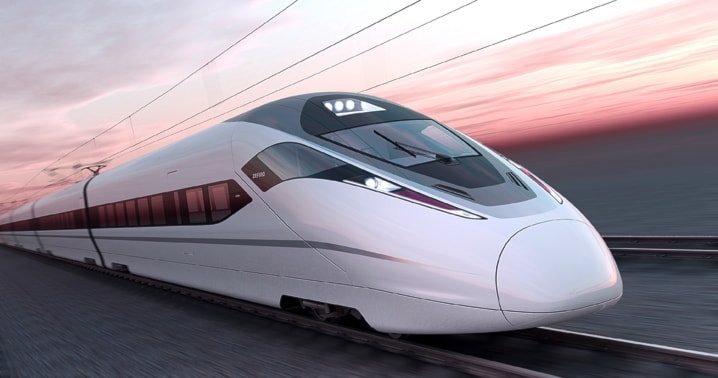Premier Alison Redford is being urged to sit down with the mayors of Edmonton, Calgary and Red Deer before any dollars are taken out of a $2-billion public transit program to fund high-speed rail.
Mayor Morris Flewwelling said the premier should discuss the issue of high-speed rail and the GreenTRIP program during a sit-down meeting with himself, Calgary Mayor Naheed Nenshi and Edmonton Mayor Stephen Mandel. He was speaking in reaction to news this week that the premier was hinting at reworking the GreenTRIP program to support bigger initiatives, such as the Calgary-Edmonton train link.
“If we’re going to be coming to the table, I would say Edmonton, Calgary and Red Deer should meet with the premier and look at a fair and equitable way,” Flewwelling said on Tuesday. “One of the things we don’t want to see is Edmonton, Calgary and Red Deer squabbling over the money. High-speed rail, even (most other) transit, cannot be built with municipal resources. It has to be built with provincial and federal money.”
Redford should embark on a 10-year plan involving both transit and high-speed rail, Flewwelling said.
“Right now, most of the money would be spent on LRT and transit, but a little bit would also be spent on high-speed rail,” said Flewwelling. “And gradually over the 10 years, the high-speed rail would get the bulk of the funding,” he suggested. “We’re just not putting enough provincial and federal money into municipal transportation and resources. We tend to want to put it in freeways and roads.”
The Green Transit Incentives Program (GreenTRIP) program is intended to provide Albertans with a wider range of sustainable public transit alternatives to help increase transit ridership, reduce traffic congestion and thereby reduce greenhouse gas emissions.
Last September, the Alberta government donated $12.1 million from GreenTRIP to the City of Red Deer so it could buy 40 new low-floor transit buses. Some Edmonton and Calgary leaders are wondering what the impact could be on future bus and LRT projects if some GreenTRIP funding is reallocated.
There’s no use pushing high-speed rail faster than local transit, Flewwelling said.
“High-speed rail is not really useful unless each anchor point is served by an efficient and effective internal transit system,” Flewwelling said. “There’s no use getting dumped off without a car if you are nowhere. There has to be an intensive upgrading of LRT and bus lines in each of the centres.”
Flewwelling said he’d like to see the train stop in downtown Red Deer underneath Sorensen Station transit terminal and not on the west side of Hwy 2 outside Red Deer.
The topic of building a high-speed rail system between Alberta’s two largest cities has been bandied about for several years, but so far there’s no definite plans as to when construction is likely. In July 2009, former Transportation Minister Luke Ouellette predicted a high-speed train was 15 years away from having its first passengers.
In 2009, a high-speed rail study commissioned by the province looked at five station stops along the Hwy 2 corridor — the airports in Calgary and Edmonton, downtown Calgary and Edmonton, and an unidentified stop at Red Deer.
That consultants’ report evaluated four types of trains — from the slower 200-km/h diesel electric train, which would take two hours to travel from Calgary to Edmonton, to the 480-km/h magnetic levitation train, which would deliver passengers to their destination in one hour.
ltester@www.reddeeradvocate.com
